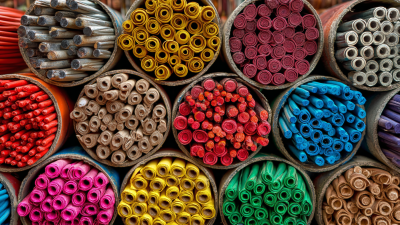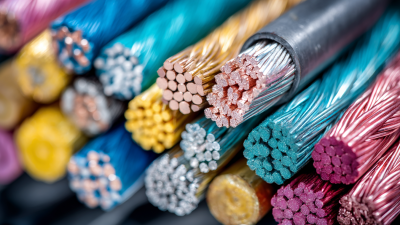In the ever-evolving realm of Home Decoration, sustainability has become a pivotal theme for homeowners seeking to create beautiful and eco-friendly spaces. As we step into 2023, experts are increasingly emphasizing the significance of making environmentally conscious choices in our decor. Renowned interior designer Jamie Durie once stated, "Sustainable design is not just a trend; it's a necessity for a better future." This mindset inspires new waves of creativity and responsibility within the industry.
Transforming your home can be both a reflection of your personal style and a commitment to the planet. By integrating sustainable practices into your Home Decoration projects, you can cultivate a harmonious environment that resonates with nature and reduces waste. From choosing reclaimed materials to incorporating energy-efficient lighting solutions, the options are endless. This article will delve into the top five expert tips to revamp your living space while prioritizing sustainability, ensuring that your home is a sanctuary for both you and the Earth.

Sustainability in home decoration is more important than ever, as the environmental impact of our choices becomes increasingly apparent. The production of furniture and decor items often involves significant energy consumption and waste, contributing to pollution and climate change. By choosing sustainable materials, such as reclaimed wood, recycled textiles, or organic fabrics, homeowners are not only minimizing their carbon footprint but also supporting ethical manufacturing practices that prioritize the planet's health.
Additionally, sustainable home decoration encourages creativity and personalization. By repurposing items or opting for second-hand treasures, individuals can create unique spaces that reflect their style while being environmentally conscious. This approach not only reduces waste but also promotes a culture of mindful consumption, where the focus shifts from mass-produced goods to meaningful, long-lasting pieces. As we embrace sustainability in our living environments, we not only enhance our homes but also commit to a lifestyle that respects and preserves the Earth for future generations.
When it comes to sustainable home decoration, selecting eco-friendly materials is key to creating a space that is both stylish and responsible. One of the best choices is reclaimed wood, which not only adds character to any room but also reduces the demand for new timber. This material can be used for furniture, flooring, or even accent walls, lending a rustic charm to modern designs. Reclaimed wood is often more durable than its newly sourced counterparts, ensuring longevity in your home decor.
Another excellent option is recycled metal. This versatile material can be transformed into stunning furniture pieces or decorative accents without the environmental toll of extracting new resources. Look for items made from salvaged metal, like lighting fixtures or home accessories, which add an industrial edge while promoting sustainability. Additionally, consider textiles made from organic cotton or bamboo, as they are both biodegradable and can help regulate your indoor environment. By choosing these eco-friendly materials, you not only enhance your home’s aesthetic but also contribute to a healthier planet.
In 2023, incorporating upcycled and vintage items into home decoration not only adds character and uniqueness to your space but also aligns with sustainable practices that are gaining traction among homeowners. Designers predict that opting for reclaimed or recycled materials will be a hallmark of decor trends, as these choices reduce waste while infusing a story into the objects we choose. For instance, furniture made from upcycled wood can seamlessly blend into modern aesthetics, creating a beautiful juxtaposition with contemporary design elements.
To truly honor the past, consider integrating antiques and vintage pieces that resonate with your personal history or the history of your locality. Experts suggest that displaying vintage finds in intentional arrangements enhances the charm of your home. For instance, using antique side tables or distressed chairs can become focal points in a room, while curated art displays—much like those seen in homes that double as galleries—can bring vibrant energy to your space. Interior designers emphasize that these approaches not only bring timeless elegance but also reflect a growing desire for sustainable living, where every piece tells a story and serves a purpose.
In 2023, the trend of biophilic design continues to flourish, bringing nature indoors and enhancing well-being through thoughtful decoration choices. Research indicates that incorporating natural elements can improve mood and productivity by up to 15% (Human Spaces Report, 2018). By integrating features such as plants, natural light, and organic materials, homeowners can create environments that resonate with serenity and vitality.
One effective approach to biophilic design is the use of indoor plants. A study from the University of Queensland found that workplace satisfaction increased by 15% when decorative plants were incorporated. You can start small with low-maintenance options like succulents or snake plants, or create a more immersive environment with vertical gardens or green walls. Additionally, utilizing natural textures such as wood, stone, and textiles in your decor can create a cohesive aesthetic that mimics the outdoors, fostering a stronger connection between your living space and nature. By embracing these ideas, you can cultivate a home that not only looks beautiful but also nurtures a sustainable lifestyle.
When transforming your home for a more sustainable appeal, it's essential to prioritize waste reduction throughout the makeover process. One effective strategy involves eco-friendly organizing techniques that help minimize clutter and promote efficient storage solutions. By implementing these sustainable practices, you can prevent common issues like paper pileups and excessive waste from accumulating in your space. Consider using reusable containers for organizing items and incorporating natural materials that are both functional and visually appealing.
In addition to organizing, focus on reusing quality items during your home renovation. Instead of discarding older furniture or decor, think creatively about how these pieces can be revitalized and integrated into your new design. Shopping secondhand not only saves money but also reduces the demand for new materials, effectively lowering your environmental footprint. Furthermore, managing food waste is crucial; implementing strategies to avoid food wastage from the start can significantly contribute to a more sustainable household. Simple actions like meal planning and proper food storage not only help in reducing waste but also enhance your overall home environment.






